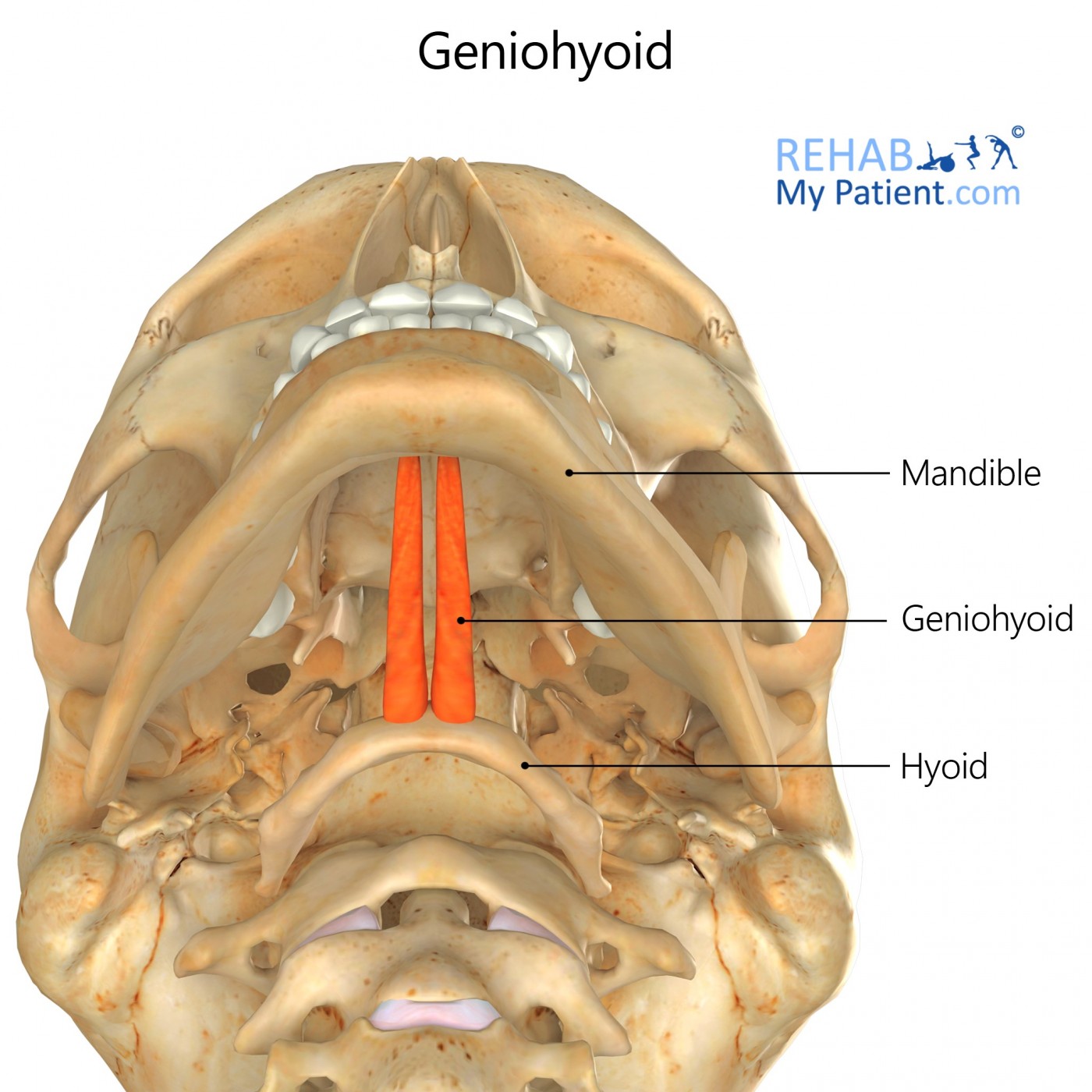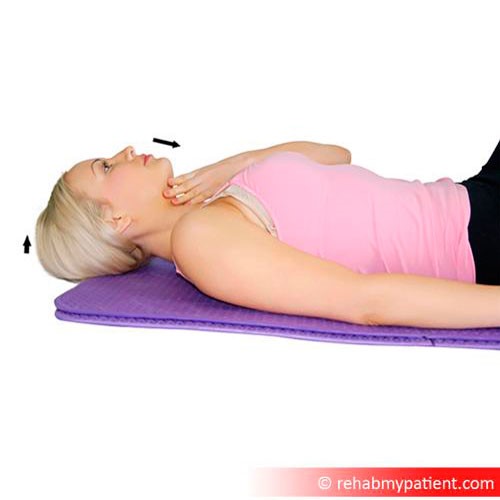Geniohyoid (chin)
Opublikowano dnia 24th Jul 2020 / Opublikowano w: Głowa

General information
The geniohyoid is a small muscle that runs from the chin to the hyoid bone. It is part of the suprahyoid muscle group.
Literal meaning
The muscle of the chin and the U-shaped bone.
Interesting information
The geniohyoid muscle is absolutely essential for the act of deglutition, commonly referred to as swallowing. When food is taken into the mouth and forced back to the pharynx, the geniohyoid muscle raises the hyoid bone and the tongue to enable the unhindered movement of the bolus.
Anatomical variations may include slips of tissue running to the genioglossus or the greater cornu of the hyoid bone.
Throat pain, difficulty speaking, or dysphagia (difficulty swallowing) may be indicative of an injury to the geniohyoid muscle. This muscle is susceptible to strain, tear, infectious myositis, and atrophy, among other conditions.
Persistent dysphagia requires medical intervention which will include a thorough investigation of the root cause. Alterations in diet, such as consuming only soft, malleable foods, may help with dysphagia associated with the geniohyoid muscle or other suprahyoid muscles. Changes in neck and body position when swallowing may also be necessary.
Origin
Internal surface of mandible (anterior).
Insertion
Hyoid bone (anterior).
Function
Moves the hyoid bone and the tongue upward when swallowing.
Nerve supply
Hypoglossal nerve (C1).
Blood supply
Sublingual artery.

Relevant research
B/M mode ultrasound may be used in place of conventional video fluoroscopy for viewing the geniohyoid muscle and diagnosing related conditions. The ultrasound method is easy to use, non-invasive, and does not involve radiation which makes it superior to video fluoroscopy.
Yabunaka, Gojiro Nakagami, Hiromi Sanada, Toshizo Katsuda, Kenyu Yamamoto, Hidetoshi Yatake, Tatsuhiro Gotanda, Rumi Gotanda, Shuji Abe, Mutsumi Ohue (2012). “Effects of Bolus Volume on Geniohyoid Muscle Movement during Swallowing: Ultrasonographic M-Mode Study in Healthy Adults”. IFMBE Proceedings Volume 37, pp 757-760.
Electromyography shows that muscle activity in the genioglossus and geniohyoid differs according to the bolus being swallowed. There is also considerable variation in EMG activity between individuals and even among different swallowing events in a single individual.
Donald P. Cunningham, John V. Basmajian (2005). “Electromyography of genioglossus and geniohyoid muscles during deglutition”. The Anatomical Record, DOI: 10.1002/ar.1091650309.
Geniohyoid muscle weakness in older adults is an important factor in swallowing ability and aspiration incidence.
Xin Feng, Tee Todd, Catherine R Lintzenich, Jingzhong Ding, Jeffery J Carr, Yaorong Ge, James D Browne, Stephen B Kritchevsky, Susan G Butler (2012). “Aging-Related Geniohyoid Muscle Atrophy Is Related to Aspiration Status in Healthy Older Adults”. The Journals of Gerontology Series A Biological Sciences and Medical Sciences, DOI:10.1093/gerona/gls225.
Geniohyoid (chin) exercises

The so called “Shaker Exercise” is designed to strengthen the suprahyoid muscles, including the geniohyoid. Strengthening these muscles can relieve dysphagia. It has an isometric and an isokinetic portion.
First, lay flat on the floor and do not place a pillow under your head as you need it to be completely flat. Lift your head while keeping your shoulders firmly on the ground. Tuck your chin into your chest and hold this position for 60 seconds then rest for 60 seconds. Repeat this lift three times.
Next, perform the same head lifting movement but as soon as your chin reaches your chest, release and go back to the starting position. Repeat this 30 times.
Zapisać się
Zarejestruj się już teraz, aby skorzystać z bezpłatnego okresu próbnego!
Zacznij korzystać z Rehab My Patient już dziś i zrewolucjonizuj proces przepisywania ćwiczeń, aby zapewnić sobie skuteczną rehabilitację.
Rozpocznij 14-dniowy bezpłatny okres próbny